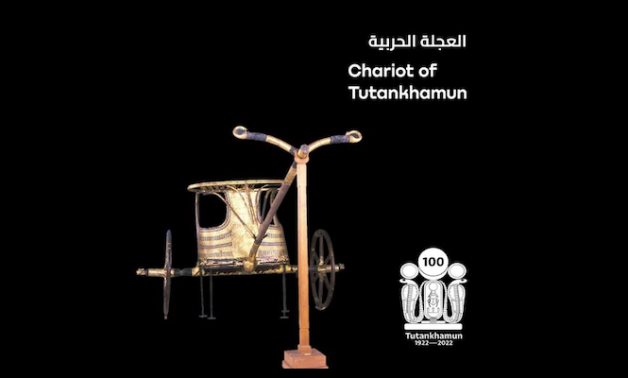Tutankhamun was not regarded as one of the finest warriors of ancient Egypt, but his tomb had a collection of six chariots, which were disassembled when they were discovered. CAIRO – 24 October 2022
The chariots, which were typically made of wood and were discovered with accoutrements, suggest they may have been employed for hunting.
In 1922, Howard Carter’s discovery of the tomb of Pharaonic King Tutankhamun attracted interest around the world, and it has persisted in doing so for the past 100 years.
However, contrary to popular belief, the accounts of burials and excavations are not entirely straightforward.
Fascinating pieces from the tomb have been exhibited in Egypt and around the world, but a new exhibition at Oxford’s Bodleian offers a different perspective.
It includes 150 carefully chosen artefacts from the Griffith Institute archives, the majority being from Carter’s own collection.
These archival materials, including original photographs, letters, notes, plans, drawings, and record cards, tell the story of the discovery of the tomb through the eyes of individuals on the ground, and provide a more accurate picture of events.
The child king Tutankhamun is said to have been interred in a modest tomb in the Valley of the Kings on a spring day around 1320 BC, according to the British website The Past. The tomb chambers were filled with funerary equipment ranging from exquisite pieces of handicrafts from the royal court to more personal items, like the little special furniture made for the king who ascended the throne as a boy.
The embalmed king was placed in his numerous golden coffins and sarcophagi inside a series of gilded shrines in the burial chamber at the centre of the tomb, which was then permanently closed, following several days of elaborate festivities. Before the tomb was completely sealed from the exterior and marked with Tutankhamun’s name, funerary items were deposited in the outer rooms.
The young king’s sudden demise at the age of 19 necessitated the redirection of a little, earlier tomb.
In order to fit extravagant funeral objects inside, the entrance has been widened. Even still, the arduous royal burial procedure was not yet totally finished.
The tomb was soon broken into by thieves at least twice, although they were unable to enter the burial chamber.
Although the king’s body was still there and the authorities were able to clean up the mess in the outer rooms, there are still traces of the burial procedure visible in small details, such as finger prints on containers left by people who attempted to steal their contents.
When Tutankhamun’s tomb was found in 1922, it had 6 chariots.

